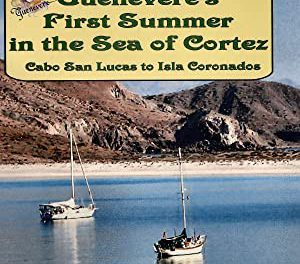
Using GPS and a chart plotter for detailed navigation, I have become over-confident. Jerry and I refer to our boat’s system as “Nintendo navigation.” We can go to a small lump protruding from the lake bed of Lake Superior at a depth of 15 feet — one of our favorite anchoring places — and drop our anchor there every time. That lump isn’t much more than 30 or 40 feet in diameter . . . not much longer than our boat. We couldn’t do this without GPS and the depth sounder, even though we know generally where it is.
This unwavering faith in our electronic system is setting me (and other sailors who share my feelings) up for a big comeuppance, according to Nigel Calder. And he’s right. His newest book, How to Read a Nautical Chart: A Complete Guide to the Symbols, Abbreviations, and Data Displayed on Nautical Charts is just what the title says and a whole lot more. It includes an improved version of Chart Number 1. For this reason if for no other, it belongs on your boat. But it’s real value is in the first sections where Nigel tells us that the charts aren’t as accurate as our GPS, that our satellite-based navigation equipment may be operating on different datum than our chart’s datum, and that there are limits to horizontal and vertical accuracy in all charts. Read this thoughtfully before putting the book on your boat’s bookshelf. Nigel’s message in these early sections is clear: Let the electronic mariner beware.
He warns us from becoming complacent and from cutting corners too closely. Nigel is one of the most humble of the current group of sailing authors and experts in that he makes mistakes and admits them freely in his books and magazine articles. The man who researches and tells us about the pitfalls of charts and the limitations of chart surveying methods goes aground and tells us so. Not even Nigel can ignore the Siren’s call of electronic overconfidence. In this book he prints a photo of his boat, Nada, hard aground on a rock ledge off the coast of Maine.
So study this latest Calder book before your next cruise and take it along as a reference on chart symbols and abbreviations. There will be many times in the future after avoiding an inconvenience or a tragedy that you’ll be thankful Nigel wrote this book and brought some very important navigational information to your attention. He has removed my over-confidence and replaced it with caution.
How to Read A Nautical Chart: A Complete Guide to the Symbols, Abbreviations, and Data Displayed on Nautical Charts by Nigel Calder (International Marine, 2003; 237 pages)




